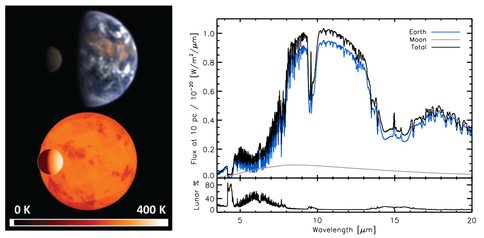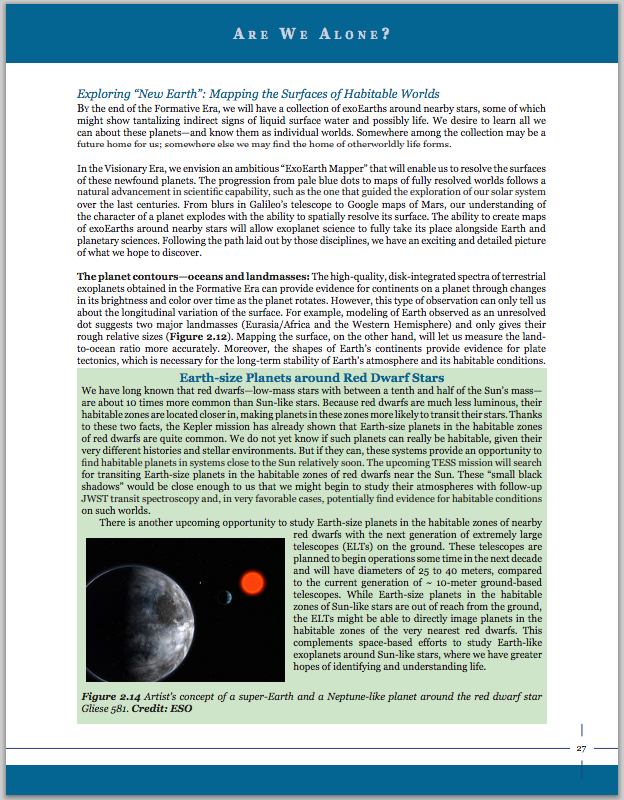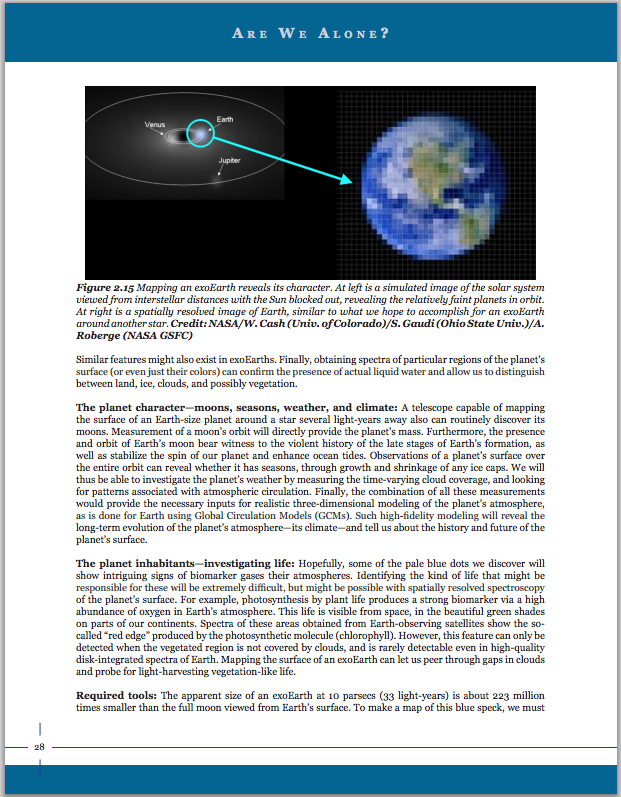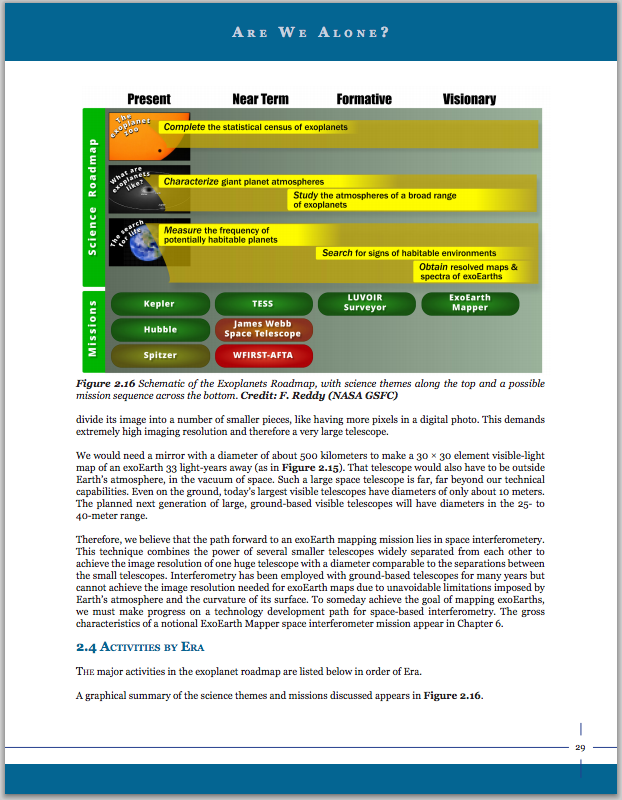It looks like you're using an Ad Blocker.
Please white-list or disable AboveTopSecret.com in your ad-blocking tool.
Thank you.
Some features of ATS will be disabled while you continue to use an ad-blocker.
2
share:
Northrup Grumman is in the process of creating a new type of telescope system to help study outlying planetary systems. This is breakthrough
technology that is obviously going to take what we have been getting from Hubble and other telescopes and make them seem like original silent films.
Cool, but 'old'. I'm excited to see where this goes!
Source
The video is a TED talk that explains the technology and the hope for what we can get out of the new telescope in comparison to what we currently have to work with and the problems it brings.
The New Worlds Observer (NWO), in development by Northrop Grumman, is a mission using an external coronagraph, or “starshade,” to study planetary systems around the closest stars.
The starshade advantage
The innovative starshade concept uses a large screen, shaped like a daisy and taller than a 15-story building, to allow a companion space telescope to detect extrasolar planets around stars less than 50 light years from Earth.
The starshade is needed to block the light of the host star and reveal its planets. For example, from a distance of 10 parsecs (33 light years), our Sun would outshine the Earth by a factor of 10 billion and would be only 0.1 arcsecond (1/36,000th of a degree) away, making the planet impossible to view. The starshade solves this problem by suppressing the light from a star by more than 1010, while leaving the planet visible to the telescope. To do both these things at once, it must be placed tens of thousands of kilometers from the 4-meterclass telescope.
Source
The video is a TED talk that explains the technology and the hope for what we can get out of the new telescope in comparison to what we currently have to work with and the problems it brings.
edit on 24-4-2014 by CeeRZ because: (no reason given)
originally posted by: CeeRZ
Northrup Grumman is in the process of creating a new type of telescope system to help study outlying planetary systems. This is breakthrough technology that is obviously going to take what we have been getting from Hubble and other telescopes and make them seem like original silent films. Cool, but 'old'. I'm excited to see where this goes!
Good Post! S+F
Hopefully this mission will be fully funded and not cancelled like the previous attempt at this (See Terrestrial Planet Finder).
One thing I am doing in my studies is learning to characterize exozodiac dust around different nearby stars of various classes out to 20 parsecs (about 65 light years).
This will help people much smarter, who are designing future telescopes like the New Worlds Observer and others design them in such a way that they are more effective.
It's pretty boring stuff for the layperson tbh but the exciting part is that it will help us eventually take a picture like this of an earthlike planet around a nearby star!
That was an actual picture of the Earth and Moon taken from the EPOXI mission. Its aim was to understand what could be learned about the Earth at a distance of perhaps 10s of light years so we know what we can look for in images and data from the New World Explorer and other telescopes of the future!
BTW: A lot of this work takes place at my university (UW) and my professors are in the thick of it. We're looking at being able to detect everything from oceans to forests on such worlds.

SEE: TASK A: Earth As An Exoplanet
edit on 24-4-2014 by JadeStar because: (no reason given)
a reply to: JadeStar
That's fantastic! Very interesting information, thank you for adding to this!
And I agree, really hope things don't get sidelined because of finances. There is so much amazing technology out there that ends up dusty on a shelf - or thrown into a government safe box .... and left dusty on their shelf.
That's fantastic! Very interesting information, thank you for adding to this!
And I agree, really hope things don't get sidelined because of finances. There is so much amazing technology out there that ends up dusty on a shelf - or thrown into a government safe box .... and left dusty on their shelf.
originally posted by: CeeRZ
a reply to: JadeStar
That's fantastic! Very interesting information, thank you for adding to this!
And I agree, really hope things don't get sidelined because of finances. There is so much amazing technology out there that ends up dusty on a shelf - or thrown into a government safe box .... and left dusty on their shelf.
Hey, if you're interested in this and what things we'll be doing leading up to it and perhaps after it, you should check out this pdf of NASA's Astrophysics Roadmap for the next 30 years. In it there's information about precursor missions to the New Worlds Observer as well as ones which may succeed it like the ExoEarths Mapper.
Here's the PDF: Enduring Quests, Daring Visions - NASA Astrophysics in the Next Three Decades

Here's an excerpt:



edit on 24-4-2014 by JadeStar because: (no reason given)
originally posted by: CeeRZ
a reply to: JadeStar
Again! Fantastic information This stuff has always interested me. If I were better at math, I would have gone into astrophysics and the such. The stars have thoroughly intrigued me my entire life.
You know, there are careers in astronomy which you don't need to be really good at math. The world can always use more planetarium directors and science educators.
Ever consider a career in science education?
a reply to: JadeStar
I've definitely thought about it I've changed careers a few times - so that might be my next adventure... well, after my next one which is happening in December. Went from Massage therapy, to Medicare Insurance Agent, and now moving to Florida in Dec to start a restaurant. Sooooo after that - I may look into science education haha
I've definitely thought about it I've changed careers a few times - so that might be my next adventure... well, after my next one which is happening in December. Went from Massage therapy, to Medicare Insurance Agent, and now moving to Florida in Dec to start a restaurant. Sooooo after that - I may look into science education haha
new topics
-
National Guard on Standby in Many States as America Faces Tense Election Day
US Political Madness: 3 hours ago -
Hoax bomb threats linked to Russia target polling places in multiple states, FBI says
US Political Madness: 4 hours ago -
Yellow Brick Road found in the Ocean…
Fragile Earth: 10 hours ago
top topics
-
TODAY IS A HUGE ELECTION DAY FOR AMERICA - November 5th 2024 - Reports from Around The Nation.
2024 Elections: 17 hours ago, 37 flags -
Yellow Brick Road found in the Ocean…
Fragile Earth: 10 hours ago, 12 flags -
National Guard on Standby in Many States as America Faces Tense Election Day
US Political Madness: 3 hours ago, 5 flags -
Hoax bomb threats linked to Russia target polling places in multiple states, FBI says
US Political Madness: 4 hours ago, 4 flags
active topics
-
TODAY IS A HUGE ELECTION DAY FOR AMERICA - November 5th 2024 - Reports from Around The Nation.
2024 Elections • 159 • : UKTruth -
Predictions for the result
2024 Elections • 115 • : Xtrozero -
Tommy Robinson jailed again.
Mainstream News • 114 • : SprocketUK -
National Guard on Standby in Many States as America Faces Tense Election Day
US Political Madness • 11 • : BeyondKnowledge3 -
Hoax bomb threats linked to Russia target polling places in multiple states, FBI says
US Political Madness • 15 • : MetalThunder -
Fraudulent Pennsylvania Voter Registrations Traced to Democat-linked Company: District Attorney
2024 Elections • 51 • : chr0naut -
The Reactionary Conspiracy 13. The plot’s theology.
General Conspiracies • 284 • : MarxistDebunker2 -
The Acronym Game .. Pt.4
General Chit Chat • 903 • : tinkerbell99 -
The CIA's Dark Search for the Ark of the Covenant, and the Ark of Gabriel Explained.
Paranormal Studies • 22 • : Skinnerbot -
British Man Jailed for over 2 Years for Shouting at Police During Protest has Died in Prison
Social Issues and Civil Unrest • 62 • : BrucellaOrchitis
2
